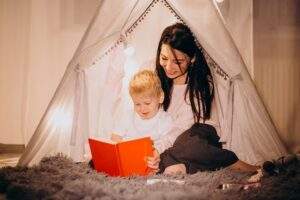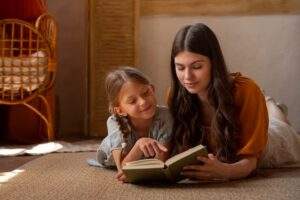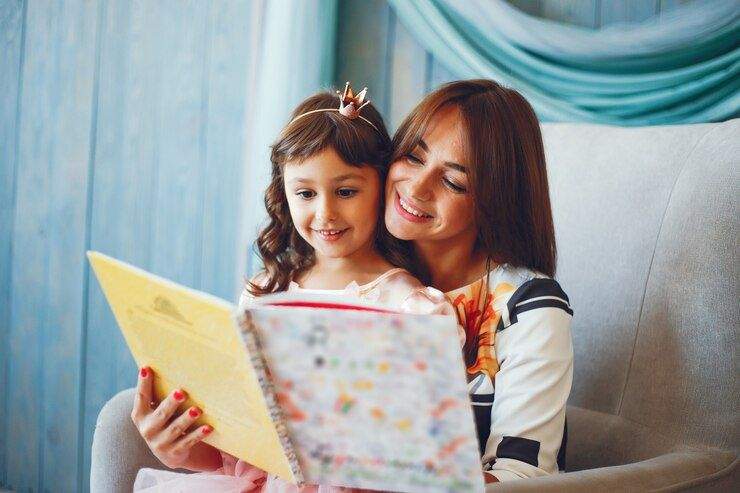As toddlers move independently and gain more control of their bodies, their curiosity about anatomy kicks into high gear. Reading poems and stories that engage this innate drive can spark joyful learning. Their developing minds are primed to soak up language patterns like rhyme and rhythm. Capitalizing on this prepares them for pre-literacy in a fun way.
This blog explores different books, stories, and poems parents and caregivers can use to educate children about their bodies. Through interactive play, physical games, and music, poems and stories help children learn as they transition from babyhood to toddlers.

Reciting and acting out poetic verses that describe the body or its functions turns learning into an entertaining performance.
Where is Your Nose? By Robert Schenkel
“Where’s Your Nose?” is a vibrant and visually engaging book that serves as an excellent introduction to basic body parts for young children. Through his charming illustrations, Robert Schenkel brings each page to life, featuring playful children eagerly pointing to and exploring their faces. His artistic style uses bright colors and simplistic yet animated drawings that are the perfect level for capturing toddlers’ attention. The repetitive text asks readers to locate common features like eyes, ears and mouths, gently reinforcing key vocabulary.
Engaging Toddlers with Classic Rhymes
The classic “Five Little Monkeys” uses repetition to reinforce essential vocabulary. Modify verses to highlight fingers, toes, knees, or noses. Encourage toddlers to wiggle the featured part each time it’s said. Their increased participation enhances memorization. Sing additional verses about other body areas to expand knowledge.
Head, shoulders, knees, and toes become an interactive dance party when you guide tiny hands and feet through the motions. Applauding their movements makes this body-scanning song a rewarding experience.
Zooming Eyes in “Brown Bear, Brown Bear”
Replace animals in this cumulative tale with eye colors and facial features. When “Brown Bear” becomes “Blue-eyed bear, what do you see?” hold up your hand for peering. Linking visuals with language immerses toddlers in multisensory learning. Suggest acting it out using props to cement understanding.
Hands and Feet Adventures
In “The Itsy Bitsy Spider,” little fingers create eight-legged crawling. Retell classic tales through an anatomical lens. As “Goldilocks” samples, chairs and beds become elbows, knees, and toes bent and stretched. Bringing stories alive through dramatic interpretation solidifies memories in meaningful ways.
Community Helpers with Moving Feet
Incorporate feet into tales about helpers who help, like police officers and teachers. Emphasize how feet aid professions through action words. Describe doctors “walking” to patients or bakers “marching” dough. Visualizing real-world roles makes abstract concepts graspable for developing minds.

The repetition inherent in many poems reinforces key details in a musical way that taps into children’s developing literacy.
Summarizing: Nourishing Curiosity Beyond Toddlerhood
Sustaining inquisitiveness requires continued guidance tailored to evolving abilities. Incorporating body-focused poems and stories into bedtimes and free time maintains enthusiasm for learning. Fostering comprehension and joy extends the benefits of early literacy into future learning successes.
Discover the Joys of Self-Exploration With “Where’s Your Nose?”
Schenkel’s vibrant artwork brings each page to life, featuring playful illustrations of infants and toddlers discovering their own faces. The repetitive text gently guides young readers to identify common features like eyes, nose and mouth. While building key vocabulary, it also sparks their innate curiosity about their bodies.
Order your copy now!

